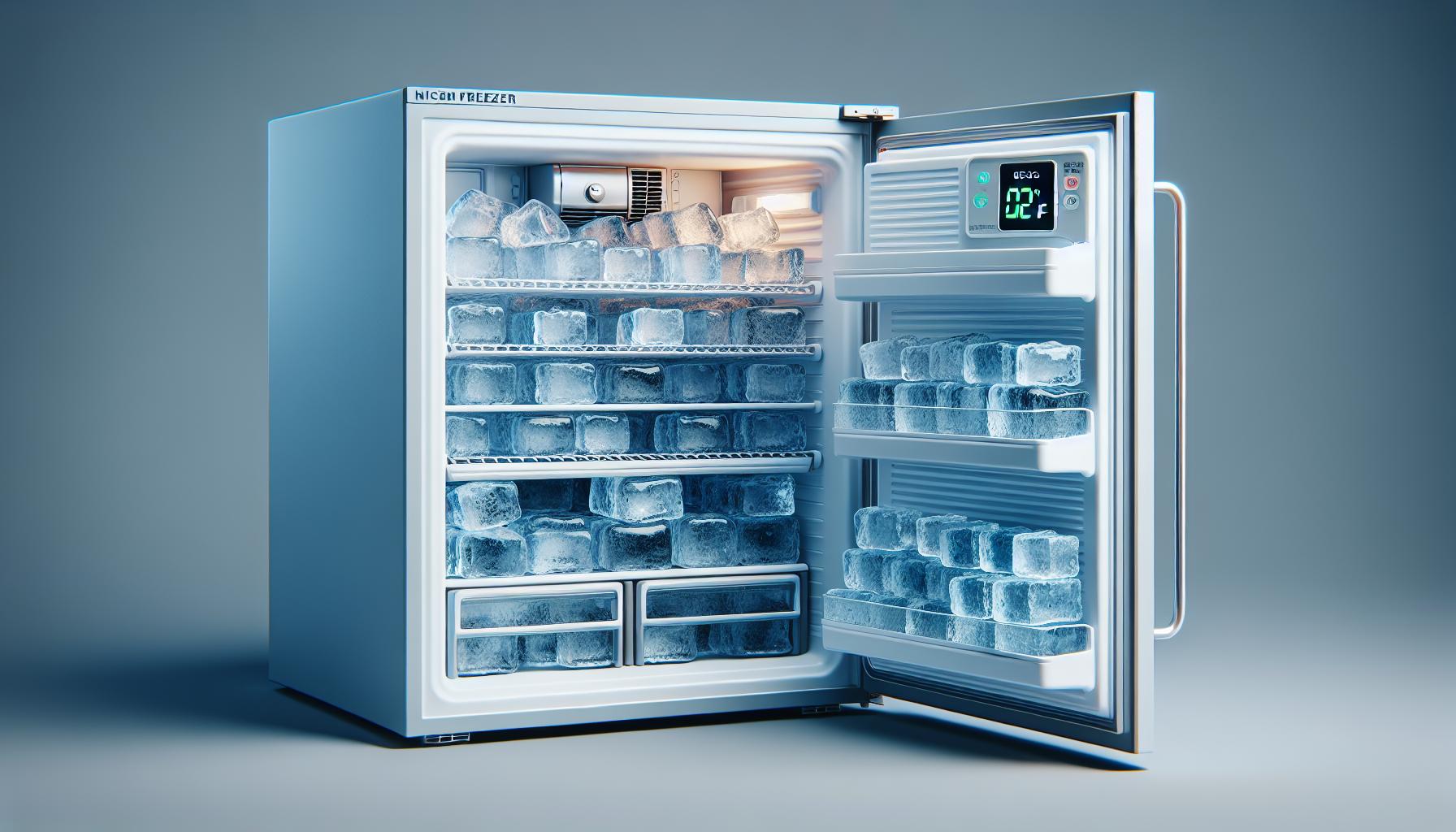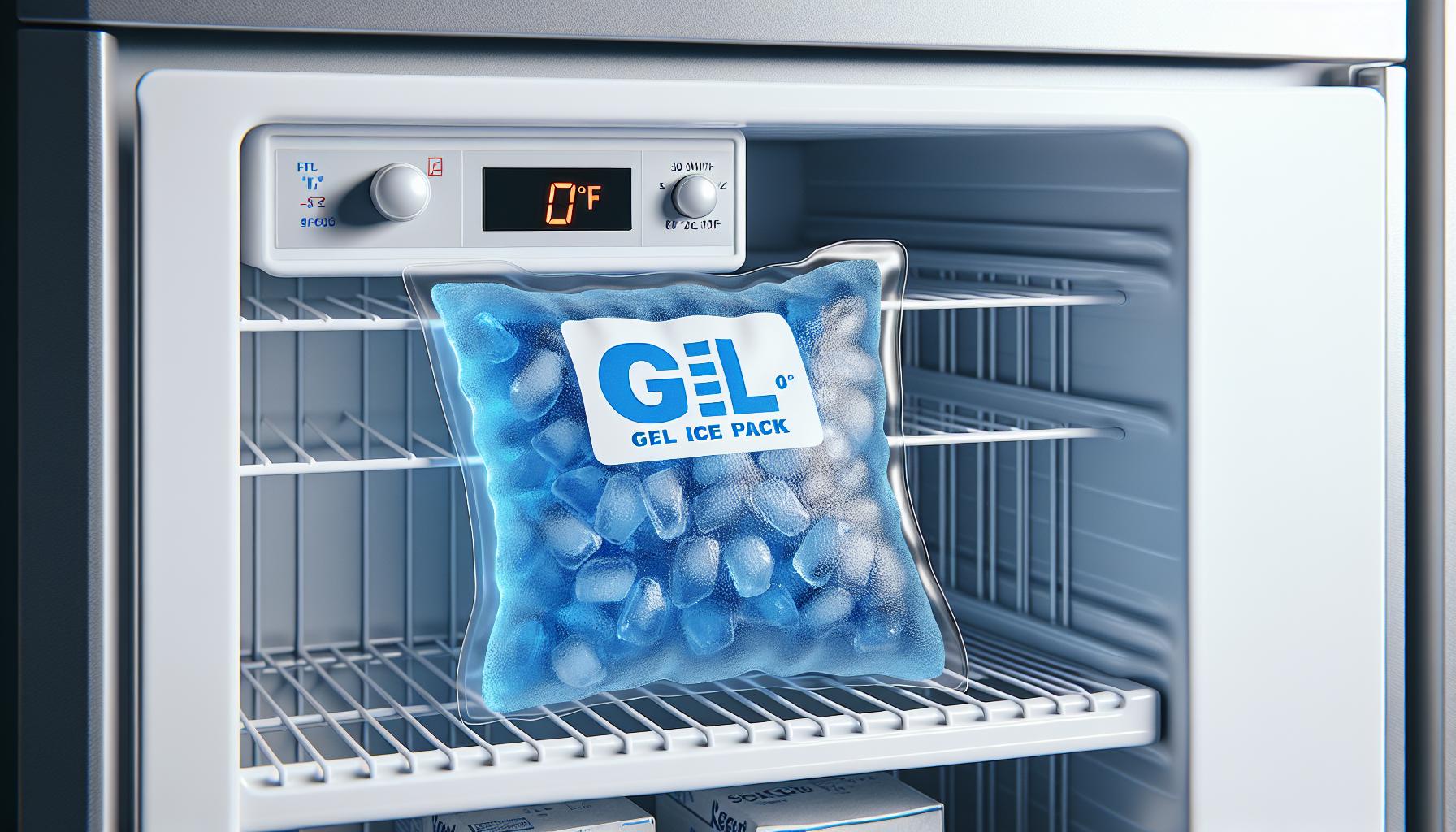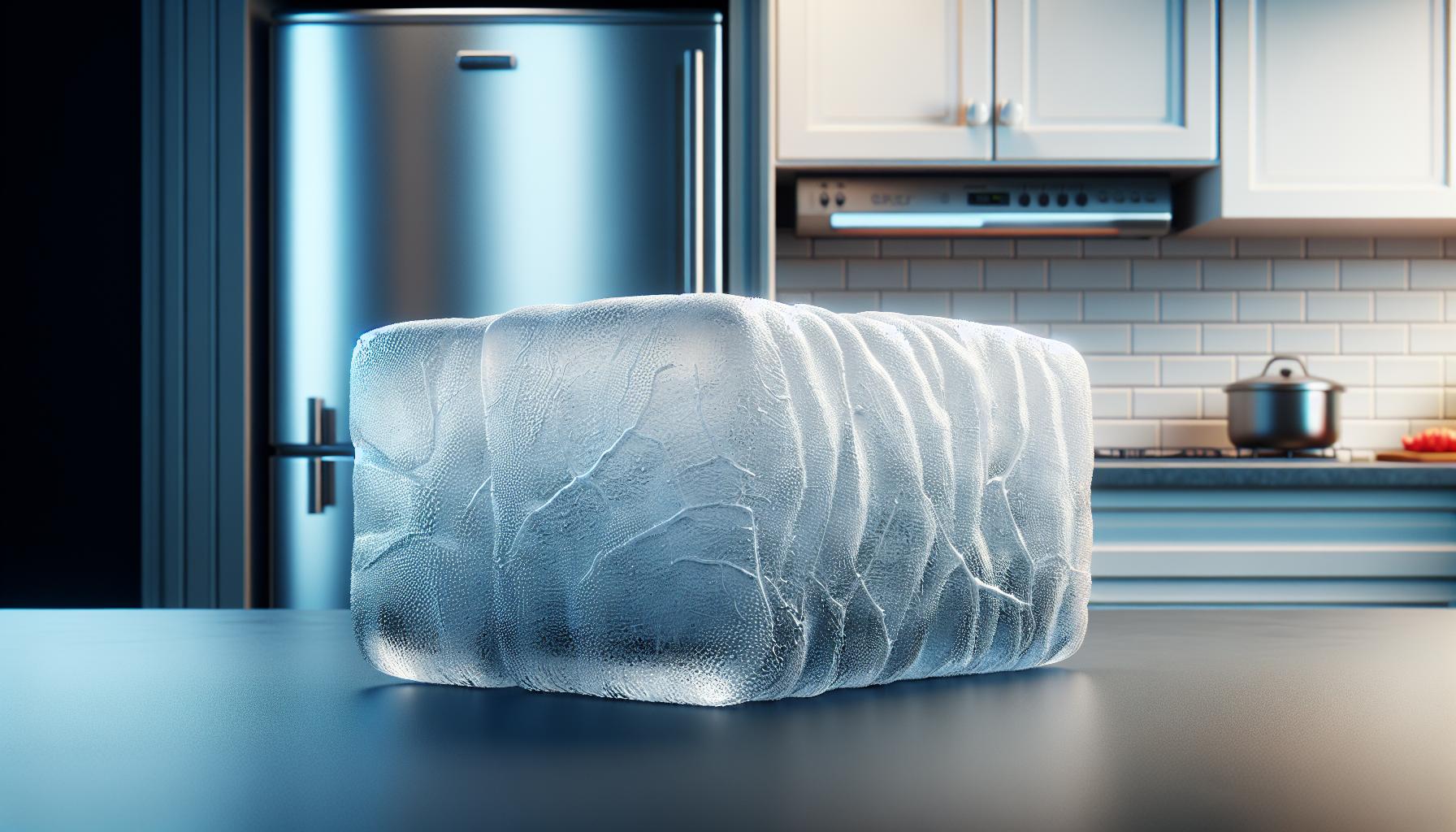When pain strikes or food needs cooling ice packs become essential household items. Understanding freeze times helps ensure they’re ready when needed whether it’s for a sports injury or keeping lunch fresh.
Most ice packs take between 1-2 hours to freeze completely in a standard home freezer set at 0°F (-18°C). However freeze time varies based on the ice pack’s size chemical composition and the freezer’s temperature.
The freezing process might seem straightforward but several factors influence how quickly an ice pack reaches its optimal frozen state. From the type of gel or liquid inside to proper freezer placement these elements play crucial roles in determining freeze time. Knowing these details helps users plan ahead and maintain ice packs effectively for any situation.
“1. Lay ice pack flat
Proper positioning maximizes the freezing efficiency of ice packs in home freezers. Laying ice packs flat creates an even distribution of the gel or liquid contents throughout the pack. This horizontal placement allows optimal air circulation around the pack’s surface.
Here are the key placement steps:
- Clear a flat surface in the freezer
- Position the ice pack horizontally
- Leave 1-inch space between multiple packs
- Avoid stacking unfrozen packs
| Position Type | Freezing Efficiency |
|---|---|
| Flat Surface | Maximum |
| Vertical | Reduced |
| Stacked | Poor |
The flat positioning prevents content distortion during the freezing process. This method preserves the outer barrier’s integrity by avoiding stress points that occur when packs freeze in irregular positions. A properly positioned ice pack maintains its shape throughout the 24-hour freezing period required for complete solidification.
Commercial facilities use specialized flat racks for consistent freezing results across multiple packs. This systematic approach ensures uniform temperature distribution throughout each pack’s contents.
2. Set freezer to 0°F

The optimal freezer temperature for ice pack freezing is 0°F (-18°C). A consistent freezer temperature maintains the ice pack’s freezing efficiency by creating ideal conditions for the gel or liquid contents to solidify. Commercial freezers operate at temperatures between 0°F (-18°C) to -22°F (-30°C) for maximum effectiveness.
Temperature settings affect freezing times:
- 0°F (-18°C): Standard home freezer setting for 24-hour freeze time
- -8°F (-22°C): Commercial blast freezer setting for 48-72 hour bulk freezing
- Above 0°F: Extends freeze time significantly
The freezer’s internal temperature remains stable when:
- The door stays closed during freezing
- The temperature dial maintains a fixed position
- Items space evenly for proper air circulation
- The freezer operates at full capacity
A reliable freezer thermometer confirms the temperature stays at 0°F throughout the freezing process. Digital thermometers provide precise readings compared to analog versions.
3. Allow 4-6 hours

Initial ice pack freezing takes 4-6 hours in a standard home freezer when positioned correctly. First-time freezing requires this extended period to ensure complete solidification of the gel contents. Specialized cold packs from manufacturers like I.C.E. Down freeze in approximately 4 hours during their initial freeze cycle.
Storage temperature impacts these timeframes significantly:
- 0°F (-18°C): 4-6 hours
- Above 0°F: 6-8 hours
- Below 0°F: 3-4 hours
The freezing process operates most efficiently when ice packs lay flat on a freezer shelf with space between them. Multiple ice packs placed simultaneously extend the freeze time by 1-2 hours. Commercial blast freezers accelerate this process, reducing freeze times to 2-3 hours for standard-sized packs.
For optimal results, place ice packs:
- Away from freezer walls
- On middle or upper shelves
- With 2-inch spacing between packs
- In a single layer configuration
After the initial 4-6 hour freeze, subsequent freezing cycles typically require less time, averaging 2-3 hours for complete solidification.
4. Check for complete freezing

Ice packs need specific verification methods to confirm they’re completely frozen. A properly frozen ice pack feels uniformly solid when squeezed with no liquid movement inside. Physical indicators include firmness throughout the entire pack surface, absence of soft spots and a consistent temperature across all areas.
Here’s how to verify complete freezing:
- Touch test: Press firmly on different sections – the pack should feel uniformly hard
- Visual check: Look for crystallization patterns across the entire surface
- Flex test: Attempt to bend the pack – it resists flexing when fully frozen
- Temperature check: The entire surface maintains equal coldness
| Freezing Stage | Physical Characteristics |
|---|---|
| Partial Freeze | Some liquid movement, soft spots present |
| Complete Freeze | No movement, uniform hardness |
For gel packs placed in a standard freezer at -22°C, allow 24 hours before the first verification check. Commercial facilities conducting blast freezing operations examine packs after 48-72 hours to ensure complete solidification across multiple units.
5. Store until needed”
Properly frozen ice packs maintain their effectiveness for 6-8 weeks in a consistently cold freezer. Store ice packs flat on middle or upper shelves with 2 inches of space between each pack. Position gel packs away from freezer walls to prevent temperature fluctuations from door openings.
Here’s how to organize frozen ice packs:
- Place similar-sized packs together in designated zones
- Label each pack with the freeze date using waterproof markers
- Rotate older packs to the front for first use
- Stack only after complete solidification
- Keep commercial packs at -22°C for optimal storage
| Storage Temperature | Maximum Storage Time |
|---|---|
| 0°F (-18°C) | 8 weeks |
| -10°F (-23°C) | 12 weeks |
| -22°F (-30°C) | 16 weeks |
Regular temperature monitoring helps maintain ice pack quality during storage. Check the freezer temperature weekly using a digital thermometer. Commercial facilities store Thermogard gel packs at -22°C for extended periods after the initial 24-hour freeze cycle.



